Guitar arpeggios
Explanation of arpeggios and arpeggios for guitar in movable shapes presented by diagrams and tabs.
The scale – chord – arpeggio relationship
Arpeggios are best understood as chords that are played both vertically and linearly on the guitar fretboard. While chords can be strummed (vertically), arpeggios involve patterns which can include more than one tone per string. Arpeggios are identical with chords, what differs is the application.
So, when to use arpeggios? They can be played separately or together with scales in improvisation situations. In jazz, for example, arpeggios can sometimes replace scales in lead playing. This is when the strummed chord progressions involve fast shifting among chord and arpeggios, since they normally involve fewer tones, are more suitable for playing over different chord in a dynamic fashion (i.e., not using a single scale over all or majority of chords).
Arpeggios can be seen as "scales without passing notes". This mean that they can match the chords (e.g., played by another guitarist, the rhythm guitar) to a higher degree. It makes them a safer choice in this lead guitar context, but they may lack some of the melodic richness that can be accomplished by using scales.
Below is the scale – arpeggio relationship illustrated with a diagram. The diagram displays Cmaj7 chord arpeggio notes in dark blue color and the remaining notes in the C Major Scale in light blue color.
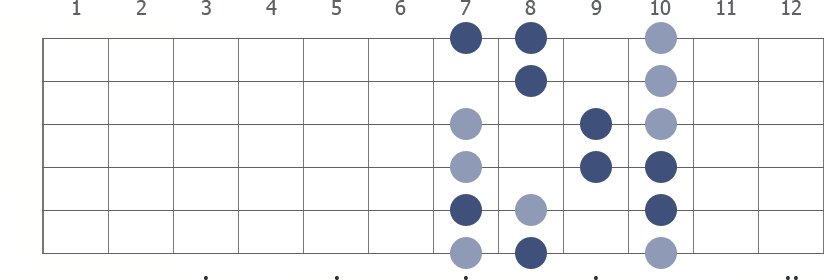
This is, of course, only one of many ways to play the actual arpeggio and scale, respectively.
Major
Major 7th two-octave pattern
The fingerboard diagram below shows a Cmaj7 arpeggio with the first root note on the 6th string (root notes in dark blue color). The shape is movable and can be used for all Major 7th chords.

Open pdf-file:
Arpeggios Major 7th (tab)
Listen to the Cmaj7 arpeggio played ascending and descending:
Major 6th two-octave pattern
The fingerboard diagram below shows a C6 arpeggio with the first root note on the 6th string (root notes in dark blue color). The shape is movable and can be used for all Major 6th chords.
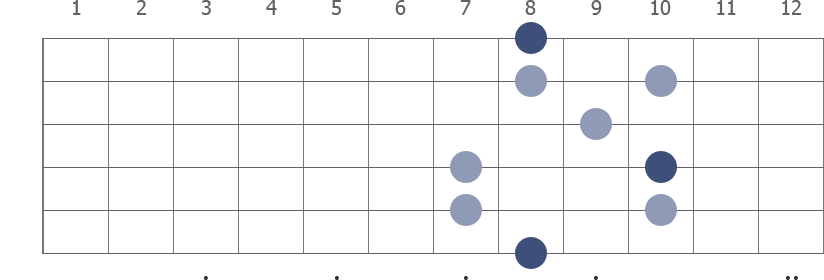
Open pdf-file:
Arpeggios Major 6th (tab)
Listen to the Cmaj6 arpeggio played ascending and descending:
Major 9th two-octave pattern
The major 9th is another chord that lends itself to arpeggios. This chord involves two octaves in its theoretical form, but to be suited for arpeggios the ninth are moved one octave back. Also, to stick with the four-note pattern, the fifth is omitted. Once again, the shape is movable.
Open pdf-file:
Arpeggios Major 9th (tab)
Listen to the Cmaj9 arpeggio played ascending and descending:
Arpeggios in all 17 keys
Arpeggios covering specific major chords:
- C major
- C# major
- Db major
- D major
- D# major
- Eb major
- E major
- F major
- F# major
- Gb major
- G major
- G# major
- Ab major
- A major
- A# major
- Bb major
- B major
Minor
Minor 7th two-octave pattern
The fingerboard diagram below shows a Cm7 arpeggio with the first root note on the 6th string. The shape is movable and can be used for all Minor 7th chords.
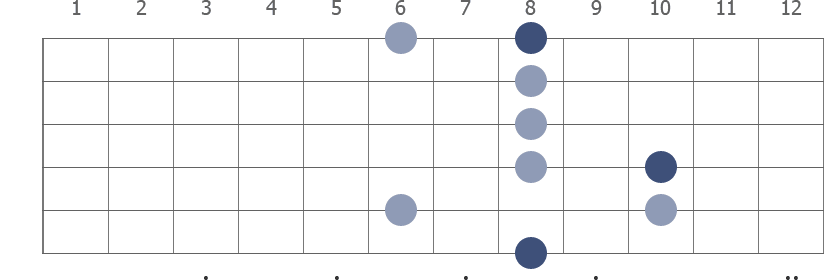
Open pdf-file:
Arpeggios Minor 7th (tab)
Listen to the Cm7 arpeggio played ascending and descending:
Minor 6th two-octave pattern
The fingerboard diagram below shows a Cm6 arpeggio with the first root note on the 6th string. The shape is movable and can be used for all Minor 6th chords.
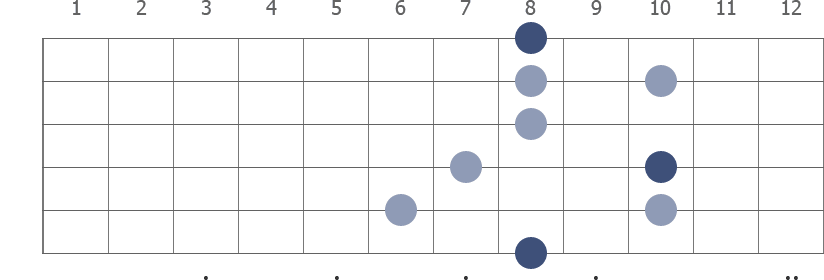
Open pdf-file:
Arpeggios Minor 6th (tab)
Listen to the Cm6 arpeggio played ascending and descending:
Minor 9th two-octave pattern
The minor 9th is another chord that lend itself to arpeggios. This chord involves two octaves in its theoretical form, but to be suited for arpeggios the ninth is moved one octave back. The four-note pattern is intact since the fifth is omitted. Once again, the shape is movable.
Open pdf-file:
Arpeggios Minor 9th (tab)
Listen to the Cm9 arpeggio played ascending and descending:
Arpeggios in all 17 keys
Arpeggios covering specific minor chords:
- C minor
- C# minor
- Db minor
- D minor
- D# minor
- Eb minor
- E minor
- F minor
- F# minor
- Gb minor
- G minor
- G# minor
- Ab minor
- A minor
- A# minor
- Bb minor
- B minor
Dominant
Dominant 7th two-octave pattern
The fingerboard diagram below shows a dominant 7th arpeggio with the first root note on the 6th string. The shape is movable and can be used for all 7th chords.
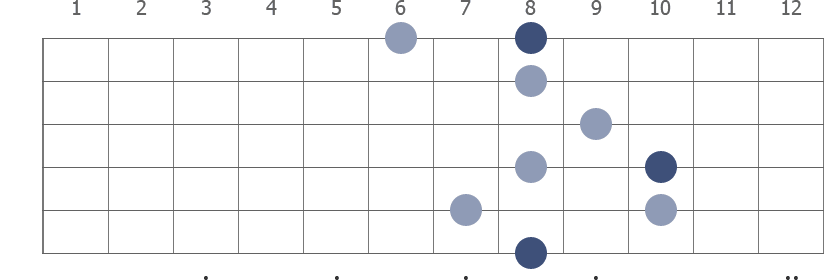
Open pdf-file:
Arpeggios Dominant 7th (tab)
Listen to the C7 arpeggio played ascending and descending:
Dominant 9th two-octave pattern
The fingerboard diagram below shows a dominant 9th arpeggio with the first root note on the 6th string (Note that the 3rd is omitted). The shape is movable and can be used for all 9th chords.
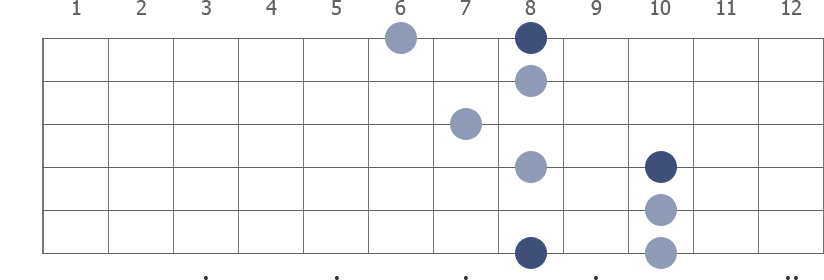
Open pdf-file:
Arpeggios Dominant 9th (tab)
Listen to the C9 arpeggio played ascending and descending:
Modes
Dorian seven-notes pattern
The tabs include a Dorian arpeggio with the first root note on the 5th string. The shape is movable and can be used for all Dorian arpeggios.
Open pdf-file:
Arpeggios Dorian (tab)
Listen to the C Dorian arpeggio played ascending and descending:
Lydian seven-notes pattern
The tabs include a Lydian arpeggio with the first root note on the 5th string. The shape is movable and can be used for all Lydian arpeggios.
Open pdf-file:
Arpeggios Lydian (tab)
Listen to the C Lydian arpeggio played ascending and descending: